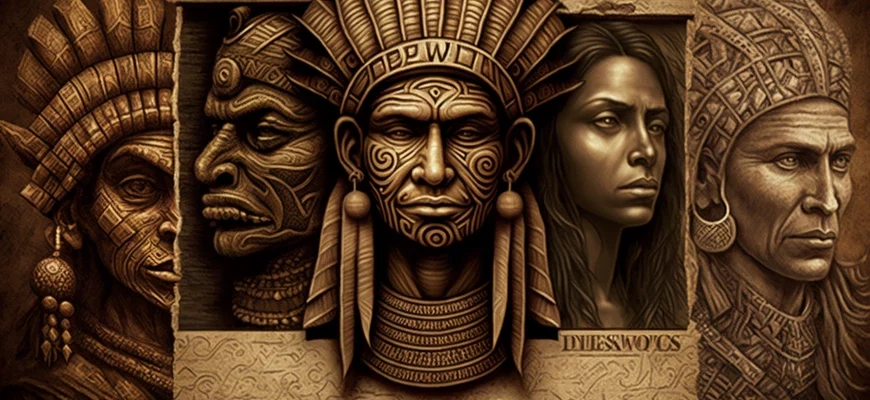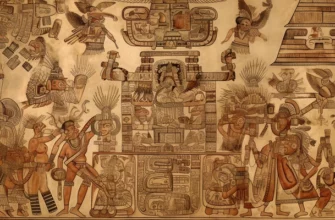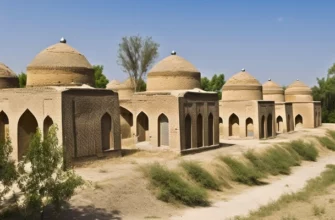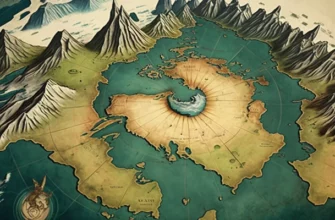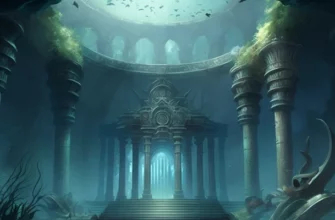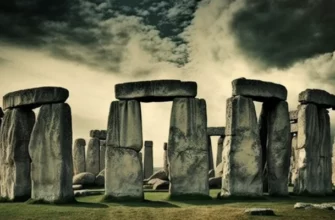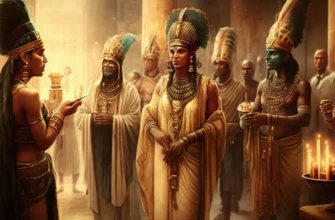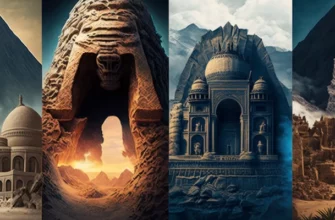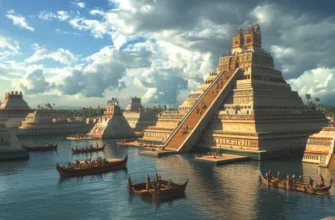The ancient civilizations of the Americas were very diverse and reflected many cultural, social, and religious traditions. The major civilizations that developed in the Americas before the arrival of Europeans include the Maya, Aztecs, Incas, Olmecs, and Toltecs.
The Maya civilization developed in Mexico, Belize, Guatemala, and Honduras from 2000 BC to 1500 AD. They were known for their mathematics, astronomy, and calendar. The Maya had a complex hierarchical system, as well as a developed writing system and art culture. One of the most famous descendants of this civilization is the researcher and Mayanist Miguel León-Portilla.
The Aztec civilization developed in Mexico from 1300 CE to 1521, when they were conquered by the Spanish conquistador Hernán Cortés. The Aztecs were known for their advanced agriculture, as well as the construction of imposing palaces and temples. They also had their own calendar and writing system, which they recorded on their famous codex textiles.
The Inca civilization developed in what is now Peru from 1200 CE until 1532, when they were conquered by the Spanish conquistador Francisco Pizarro. The Incas were known for their advanced political system and engineering skills. They built large cities and roads, including roads at altitudes of over 4,000 meters. The Incas also had their own writing system, which took the form of narrow strips of fabric known as quipu.
The Olmecs were one of the oldest civilizations in the Americas, developing in Mexico from 1400 to 400 BC. They were known for their artistic culture and the construction of complex structures such as large stone heads and altars.
The Toltecs developed in Mexico from 900 to 1168 AD. They were known for their military expertise and the construction of large cities. The Toltecs also developed art and architecture, notably building pyramids and other structures.
Thanks to advanced archaeological work and the study of written sources, we can better understand the culture and history of these ancient civilizations and their contribution to world culture.
Maya
The Maya were one of the most famous ancient civilizations of the Americas, developing in the territory of modern Mexico, Guatemala, Belize, and other Central American countries from 2000 BC to approximately 1500 AD.
The Maya were known for their advanced culture, which included art, science, mathematics, astronomy, and religion. They built large cities with complex sewage and water systems, as well as pyramids and other structures that were used for religious ceremonies.
The Maya had their own writing system, which consisted of glyphs that represented images of objects and ideas. Through their writing, the Maya recorded their history and knowledge of the world around them.
One of the most famous achievements of the Maya is their calendar system, which consisted of two calendars: the “Tzolkin” and the “Haab.” The Tzolkin calendar was used for religious ceremonies, while the Haab calendar was used to determine the seasons and agricultural work.
The Maya also developed science, including astronomy and mathematics. They were the first to define the meaning of zero and use the decimal system in their calculations.
Although the Maya were a declining civilization by the time European colonizers arrived, their influence on the culture and history of Central America and beyond remains noticeable to this day.
Aztecs
The Aztecs were one of the most famous ancient civilizations of the Americas, developing in what is now Mexico from 1300 BC to 1521 AD. They became one of the largest and most powerful empires in Central America.
The Aztecs were known for their military strength and their religious system, which placed a strong emphasis on sacrifice. They believed in a multi-headed deity called Quetzalcoatl and other deities.
The Aztecs had their own writing system, which consisted of hieroglyphs that were used to store information and the history of their people. They also developed the arts, including architecture, sculpture, and painting.
The Aztecs built large cities, including the capital Tenochtitlan, which was located on an island in the middle of a lake. They also built complex sewage and water supply systems to provide water for their people.
Although the Aztecs were destroyed after the Spanish conquest in 1521, their achievements in science, art, and architecture remain a lasting monument to their people. They also left a lasting impact on the culture and history of Mexico and Central America to this day.
Incas
The Incas were one of the most famous ancient civilizations of the Americas, developing in what is now Peru from the 13th to the 16th century CE. They were known for their highly developed culture, architecture, medicine, and agriculture.
The Incas built a vast empire that covered the territory of modern-day Peru, Ecuador, and Chile. They were known for their highly developed road and communication system, which allowed them to effectively manage their empire and exchange goods.
The Incas had their own writing system, which consisted of hieroglyphs, but it was limited and used mainly for accounting and administrative purposes. They also believed in a huge number of deities and gods, the most famous of which is Inti, the sun god.
The Incas built large cities and fortresses, including the capital city of Cuzco, which was a high-altitude city located at an altitude of over 3,400 meters above sea level. They also built huge terraced fields to provide enough food for their people.
Although the Incas were conquered by the Spanish in the 16th century, their achievements in science, art, and architecture remain extremely significant for the history and culture of Peru and Latin America as a whole.
Olmecs
The Olmecs were one of the first known ancient civilizations in the Americas, developing in what is now Mexico from 1200 to 400 BC. They were known for their highly developed culture, architecture, and art.
The Olmecs built large cities and complexes, such as the La Venta complex, which contains huge stone statues and heads, animal images, and other reliefs. They were also known for their highly developed system of agriculture, including the cultivation of corn, beans, and other plants.
The Olmecs had their own writing system, which consisted of hieroglyphs and animal images, but its meaning remains a subject of debate. They were also known for their religion and believed in a large number of deities and gods, such as Yantok, the god of the sky, and Chaitl, the god of rain.
The Olmecs were important influences on other ancient Mesoamerican civilizations, such as the Maya and Aztecs. Their achievements in science, art, and architecture remain significant to the history and culture of Mexico and Central America as a whole. To this day, many Olmec artifacts and monuments are preserved in museums and collections around the world, testifying to the enormous contribution of this ancient civilization to world history.
Toltec
The Toltec were an ancient civilization that developed in central Mexico from the 9th to the 12th centuries. They were known for their highly developed culture and art, as well as for their military achievements.
The Toltecs were masters of stone and metal and are known for their artistic works, such as intricate reliefs and high-quality gold and silver jewelry. They were also known for their architecture and construction of large structures such as palaces and temples.
The Toltecs were known for their military prowess and ability to organize large armies. They were involved in many wars with other Mesoamerican civilizations such as the Maya and Chichen Itza.
The Toltec religion was mainly polytheistic, with many deities. They believed in the reincarnation of souls and eternal life in the afterlife.
Although the Toltecs disappeared in the 12th century, their influence on other ancient Mesoamerican civilizations, such as the Aztecs and the Maya, remained significant. Stories about the Toltecs were preserved and passed down through the centuries in the form of myths and legends that recounted their achievements and cultural heritage. Today, many Toltec artifacts and ruins are preserved in Mexico as evidence of their influence on the history and culture of Mesoamerica.
Comparison and contribution to world history of all these civilizations
The Maya, Aztecs, Incas, Olmecs, and Toltecs are five ancient civilizations of the Americas that grew and flourished at different periods in history. Each had its own unique characteristics and contributions to world history.
The Olmecs were one of the first civilizations in the Americas, developing in Mexico around 1500-400 BC. They played an important role in shaping Mesoamerican culture and art, particularly in sculpture, architecture, and ritual ceremonies.
The Toltecs, who developed later, also had a significant impact on the history and culture of Mesoamerica. They are known for their achievements in art, architecture, and military organization, as well as for their religious system.
The Maya were one of the most famous and studied civilizations of the Americas, flourishing in Mexico and Central America from 2000 to 1500 BC. They played an important role in the development of mathematics, astronomy, and writing. They were also known for their artistic heritage, such as monumental architecture and reliefs.
The Aztecs were established later in Mexico, around 1325, and quickly became one of the largest and richest civilizations in the world. They were known for their military power, advanced agriculture, and water supply system. They also made significant contributions to the development of art, particularly in the fields of painting, sculpture, and architecture.
The Incas were another great civilization of the Americas that developed in South America between 1200 and 1533. They were known for their organization and management system, which allowed them to create a large empire. The Incas played an important role in the development of architecture, agriculture, trade, and water supply, and are also known for their writing system and calendar.
Although these five civilizations of the Americas had their own distinct characteristics, they also had much in common. For example, they were all based on religious and cultural values, had a developed writing system and calendar, and were known for their achievements in art and architecture.
In addition, these civilizations made significant contributions to world history, particularly in the development of science, mathematics, astronomy, and art. Their influence on world culture and history cannot be overstated, and they continue to be an important source of study for scholars and historians around the world.
